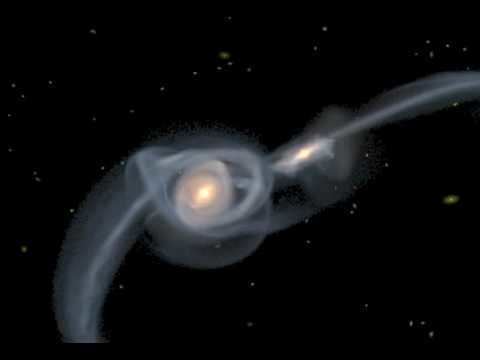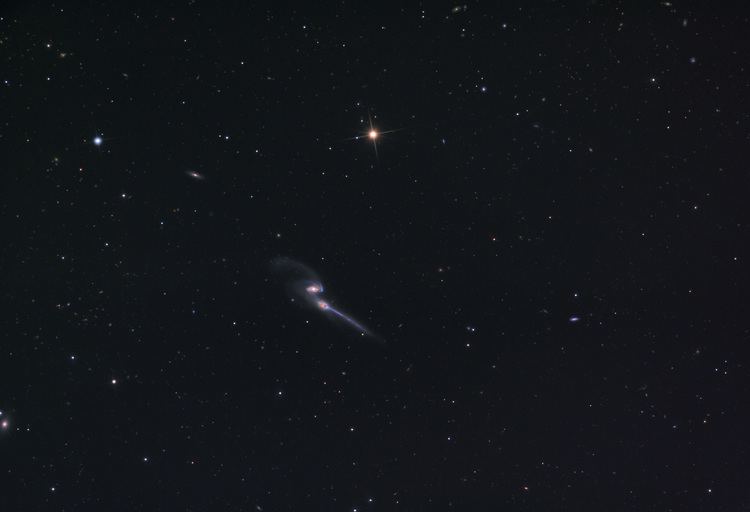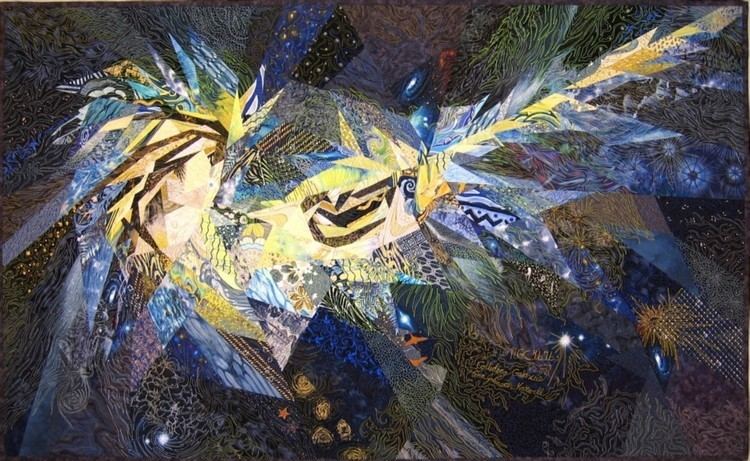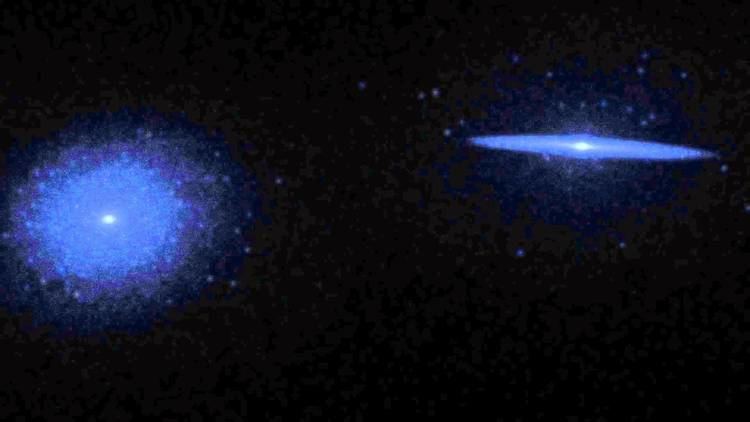Distance 290 Mly (89 Mpc) Type Irr / SB(s)0/a pec | Apparent magnitude (V) 14.7 / 14.4 | |
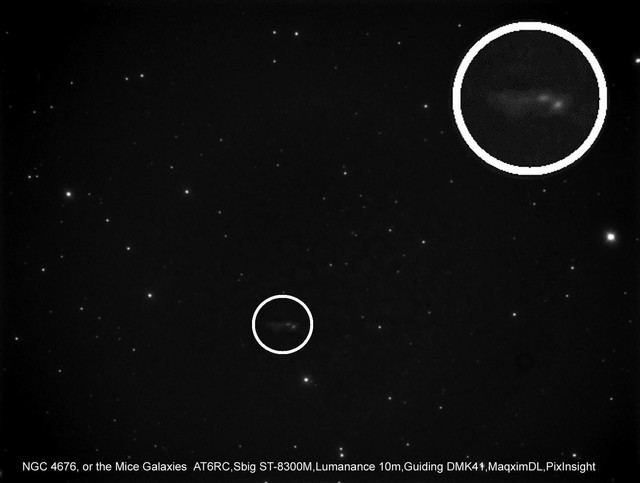 | ||
Right ascension 12 46 10.1 / 12 46 11.2 Declination +30° 43′ 55″ / +30° 43′ 22″ Redshift 6613 ± 8 / 6607 ± 7 km/s Similar Tadpole Galaxy, NGC 4559, NGC 4725, NGC 4656 and NGC 4657, NGC 4565 | ||
Ngc 4676 the mice galaxies colliding simulation
NGC 4676, or the Mice Galaxies, are two spiral galaxies in the constellation Coma Berenices. About 290 million light-years away, they began the process of colliding and merging about 290 million years ago. Their name refers to the long tails produced by tidal action—the relative difference between gravitational pulls on the near and far parts of each galaxy—known here as a galactic tide. It is a possibility that both galaxies, which are members of the Coma cluster, have experienced collision, and will continue colliding until they coalesce.
Contents
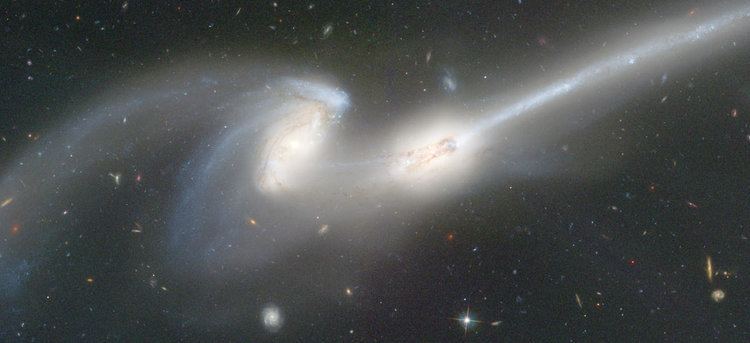
The colors of the galaxy are peculiar. In NGC 4676A a core with some dark markings is surrounded by a bluish white remnant of spiral arms. The tail is unusual, starting out blue and terminating in a more yellowish color, despite the fact that the beginning of each arm in virtually every spiral galaxy starts yellow and terminates in a bluish color. NGC 4676B has a yellowish core and two arcs; arm remnants underneath are bluish as well.
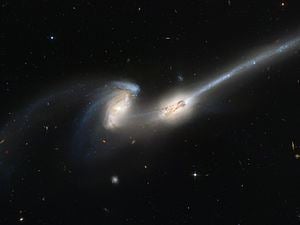
The galaxies were photographed in 2002 by the Hubble Space Telescope.
Ngc 4676 the mice galaxies
